Plant a Cherry Tree: The Guide to Do It [Images + Step by step]
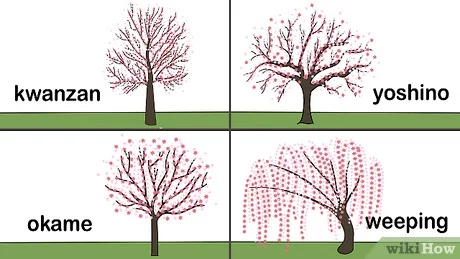
Important Points to Plant a Cherry Tree:
- When? during the spring.
- Where? They need plenty of sunlight and good air circulation.
- How long does it take for a cherry tree to grow? From seed, at least 6 years to bear the first fruits.
- How do we prepare the land? It prefers fertile, deep, slightly limestone soils, with good
 drainage, good lighting and aeration.
drainage, good lighting and aeration. - How do we water? It is relatively drought tolerant and does not require a lot of water, so you will only need to water it more frequently during the very dry periods of summer.
- How do we sow? Here step by step.
- Plagues and diseases? Birds, black aphid, cherry fruit fly, Cherry Leaf Mottle Virus
The cherry is a fruit with a demand that is increasing over the years. The cherry tree is one of the most famous fruit trees in the world.
Likewise, the tree from which it comes, the cherry tree, is recognized throughout the world.
Not only for its ornamental value, but also for its heavy and hard wood, which makes it ideal for the manufacture of furniture, instruments and veneers.
The cherry tree is beautiful and lively, and it exists in different varieties, but it demands certain requirements to achieve a successful cultivation.
Here we tell you the easiest way to plant a cherry tree.
Also, did you know that the cherry tree can be considered a fast-growing tree?
To know more: How to fertilize the cherry tree step by step.
What do we need to plant a cherry tree?
Before starting, it is necessary to determine the essential requirements for your crop, answering the following questions.
When should a cherry tree be planted?
As it is a fruit tree, its planting is recommended.during spring..
May and early June are also a good time, since it corresponds to the time when all tree species are generally planted .
It is a tree that adapts better to cold areas. In fact, late frosts can affect your production quite a bit.
The cherry tree usually blooms between March and April.
It bears fruit during the months of May and July.
Where do we sow?
 Although it is one of the fruit trees most resistant to low winter temperatures, it also adapts very well to temperate climates.
Although it is one of the fruit trees most resistant to low winter temperatures, it also adapts very well to temperate climates.
they need to receiveplenty of sunlight and good air circulation.
Its cultivation is better in areas at sea level, although it supports well heights of up to 500 m, although its harvest may be affected.
It blooms late, since it requires between 900 and 1800 cold hours for flowering.
However, it requires little heat for the development of the fruit, so it occurs before 100 days from flowering.
As a curious fact, the cherry is the only stone fruit that does not ripen outside the tree.
It prefers long and cold winters, short and hot summers, but with cool nights, and warm springs, because after flowering and fruit set, a sudden change in temperature can compromise the harvest.
Its optimum growth temperature varies between 3 and 5 ºC.
The flowers are damaged with temperatures of -2ºC.
How often should it be watered?
It isrelatively drought tolerantand it does not require a lot of water, so you should only water it more frequently during the very dry periods of summer.
However, if it goes through water stress, the risk of bacterial cancer increases.
Try to keep the soil moist, avoiding waterlogging.
How do we prepare the land?
 It prefers fertile, deep, slightly limestone soils, with good drainage, good lighting and aeration. Some varieties, however, do well in shallow, sandy soils.
It prefers fertile, deep, slightly limestone soils, with good drainage, good lighting and aeration. Some varieties, however, do well in shallow, sandy soils.
Very heavy and limestone soils, with high pH, cause problems of chlorosis and root suffocation.
The pH can be neutral or slightly acidic. It varies between 6 and 8.
It is important to consider the space, since it can reach up to 20 meters in height.
Also, keep in mind that you should plant the tree leaving a distance of between 5 and 7 meters from any other tree, especially if you are going to plant two cherry trees on the same piece of land.
How to plant a cherry tree step by step
Germinate the Seed
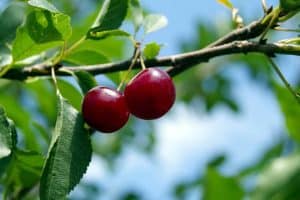 The best way to plant cherry trees effectively is to make the seed go through a «cold stratification», which is nothing more than making them believe that it is going to go through the winter period.
The best way to plant cherry trees effectively is to make the seed go through a «cold stratification», which is nothing more than making them believe that it is going to go through the winter period.
You can use seeds taken directly from any cherry, or if you prefer, you can also purchase seeds from an authorized dealer.
If you have extracted them yourself, clean them well and put them to dry in the open air until the shell feels dry.
Then place several seeds on a paper towel. Add a few tablespoons of peat-based potting soil and add a few drops of water to moisten it.
Mix the soil, making sure the seeds are well covered.
Place the seeds and soil for sowing in a ziplock bag and refrigerate for a period of 90 days, at a temperature between 0.5 and 5 °C.
Make sure the soil stays moist.
land clearing
When the seeds crack, take them out of the refrigerator and plant them right away.
Clear the ground.
 It removes weeds and remains of previous crops and all kinds of residues to ensure that your cherry tree receives the adequate amount of nutrients.
It removes weeds and remains of previous crops and all kinds of residues to ensure that your cherry tree receives the adequate amount of nutrients.
All plants must be pulled out by the roots to prevent them from growing back.
Prepare the ground for planting
Prepare the ground. Moisten the soil before planting; This reduces the risk of the seeds being moved by the force of the water.
Fertilize the soil. Spread a 1- inch layer of compost on top of the soil.
Put the seeds in the ground
If you plant in a pot, it should be at least 20 cm deep.
Put the seeds in the soil.
 Place each seed at a depth of 2.5 centimeters and cover it with soil. If you plant multiple cherry trees, each seed should be 12 inches apart.
Place each seed at a depth of 2.5 centimeters and cover it with soil. If you plant multiple cherry trees, each seed should be 12 inches apart.
If you sow in the fall, cover the seeds with 1 to 2 inches of sand to prevent frost from blocking the sprouts once they emerge.
If you plant in spring instead, just sprinkle a light layer of soil and water it.
Protect the shoots
Protect the shoots. The seeds take a long time to germinate.
Once they do and you notice the first shoots on the ground, keep them in good humidity, well lit and ventilated conditions.
If you plant outdoors, it is best to place a wire mesh to protect the plants while they are growing.
Remember to water the sprouts after the last spring frost. Water when you see the inner layers of soil just getting dry.
Transplant the shoots
Transplant your shoots. Whether you have planted several plants in rows, or you have planted them in a pot, when they have reached a height of 15 cm you should transplant them to their final place.
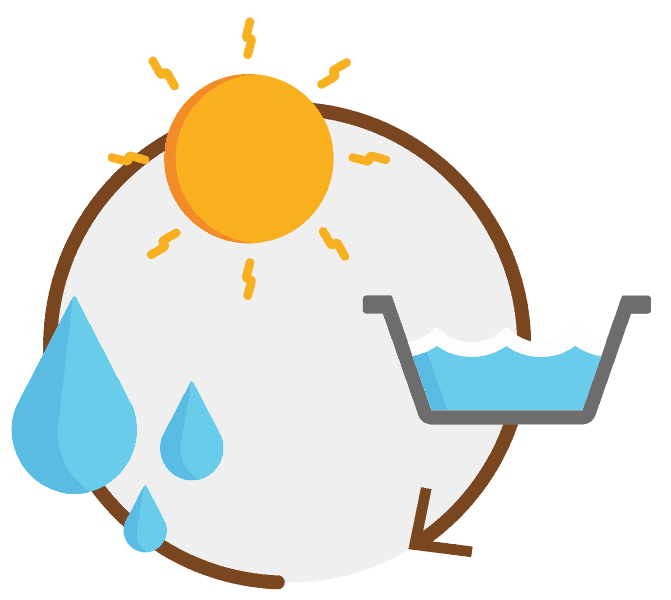 Preferably, transplant on a cool, windless day.
Preferably, transplant on a cool, windless day.
If the ground is frozen, very wet or too dry, it is not advisable to carry out the transplant.
Dig a hole big enough and deep enough for your tree’s root ball to grow snug and roots to develop.
The measurement may vary depending on the size of your tree, but it should be at least twice the size of the root ball.
When planting, check that no roots are left outside the hole.
Fill in the hole. Try that the neck of the root —where the stem begins— is not buried, but at ground level. Tamp down the soil to compact it and eliminate air pockets.
Protect the tree and give it good maintenance
Fertilize and water it after transplanting. Protect the tree and give it good maintenance.
 After the first year of planting, fertilize with homemade organic matter such as well-decomposed compost annually, preferably in early spring.
After the first year of planting, fertilize with homemade organic matter such as well-decomposed compost annually, preferably in early spring.
But if you consider it necessary, try to prune it during the period between May and August, as this is the period in which it grows actively.
To know more: All about how to prune a cherry tree.
To protect your cherry tree during the early stages, you can do the following:
- Surround it with a wire cylinder to protect them from animals.
- Trees are very vulnerable to sun damage in the fall.
So in late summer you can cover your tree with white, non-toxic latex paint diluted with plenty of water to get a runny consistency.
pollinate the flowers
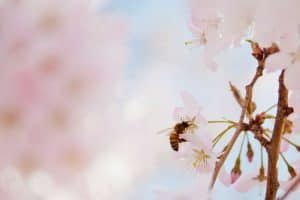 Si has cultivado cerezos para cosechar sus frutos, es necesario polinizar las flores. Las abejas son las polinizadoras más comunes para las cerezas.
Si has cultivado cerezos para cosechar sus frutos, es necesario polinizar las flores. Las abejas son las polinizadoras más comunes para las cerezas.
La forma más fácil de promover la polinización es teniendo múltiples árboles.
Cuando tengas dos o tres árboles creciendo juntos, las abejas empezarán a transportar el pólen de un árbol a otro.
Un periodo intenso de lluvias puede afectar la polinización, ya que reducen la afluencia de abejas.
Considera que el cerezo tarda hasta cinco años antes de comenzar a dar frutos.
El hecho de que tengas un árbol fuerte y sano, no garantiza que vaya a dar frutos. Para asegurarte de que lo haga, puedes considerar realizar un injerto.
 Dicho de otro modo, deberás colocar el esqueje de un árbol que si da fruto en el tronco de tu árbol para que se fusionen y se conviertan en una sola planta.
Dicho de otro modo, deberás colocar el esqueje de un árbol que si da fruto en el tronco de tu árbol para que se fusionen y se conviertan en una sola planta.
Hay diferentes formas de hacer injertos. Te recomendamos que consultes con un experto para que te oriente en la manera más eficaz de realizarlo.
También deberás asegurarte de que ambas especies que piensas injertar son compatibles.
Realizar un injerto es algo arriesgado con los árboles cultivados a partir de semillas, ya que quizás desconozcas la variedad.
Sin embargo, si lo haces a los dos años de edad de tu árbol y logras un injerto exitoso, puedes obtener frutos al cuarto o quinto año de vida.
¿Cómo cosechar las cerezas?
 Para obtener frutos, generalmente necesitarás dos variedades de cerezas dulces para fertilizarse entre sí. Las guindas, no obstante, son fértiles por sí solas.
Para obtener frutos, generalmente necesitarás dos variedades de cerezas dulces para fertilizarse entre sí. Las guindas, no obstante, son fértiles por sí solas.
Las cerezas pueden recolectarse a mano. De preferencia, cuando se encuentren lo más maduras posible, porque el azúcar no aumenta después de la recolección.
The acceptable degree of ripeness implies that the entire surface of the cherry has a uniform light red color. The color can be mahogany red depending on the variety.
Common pests and diseases
To delve into the pests and diseases of the cherry tree.
Some of the most common pests and diseases that affect cherry trees are:
birds
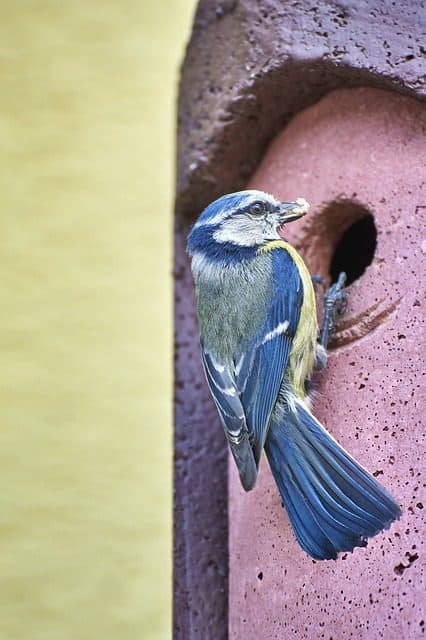 In addition to reducing the crop, birds often damage more cherries than they eat.
In addition to reducing the crop, birds often damage more cherries than they eat.
For control you can hang pieces of shiny metal or tin sheets that move in the wind from the branches. Compact discs work too.
Use scarecrows.
Black aphid (Myzus cerasi)
It causes the rolling of the leaves and tender shoots.
For its control, it is recommended to apply potassium soap and neem oil.
Cherry fruit fly (Rhagoletis cerasi)
They lay their eggs in the pulp of the cherry, causing it to change color. The larvae feed on the juice of the fruits.
For its control, yellow traps or containers with sticky surfaces can be placed so that they remain adhered.
In addition, ecological alternatives can be used, such as applying 1% potassium soap sprayed with rainwater or distilled water to the underside of the leaves.
Cherry Mottle Leaf Virus
Symptoms consist of leaf discoloration. Affected leaves also develop an irregular shape.
Infections can lead to severe stunting and crop failure.
For its control, it is recommended to use certified virus-free rootstocks and grafts and eliminate infected material in the field.
Brown or brown rot
Brown or brown rot is a fungal-type disease that appears, above all, in humid and hot conditions.
The good part is that it is not usually lethal for our fruit trees. Especially if we manage to treat it in time. It mainly harms our fruits.
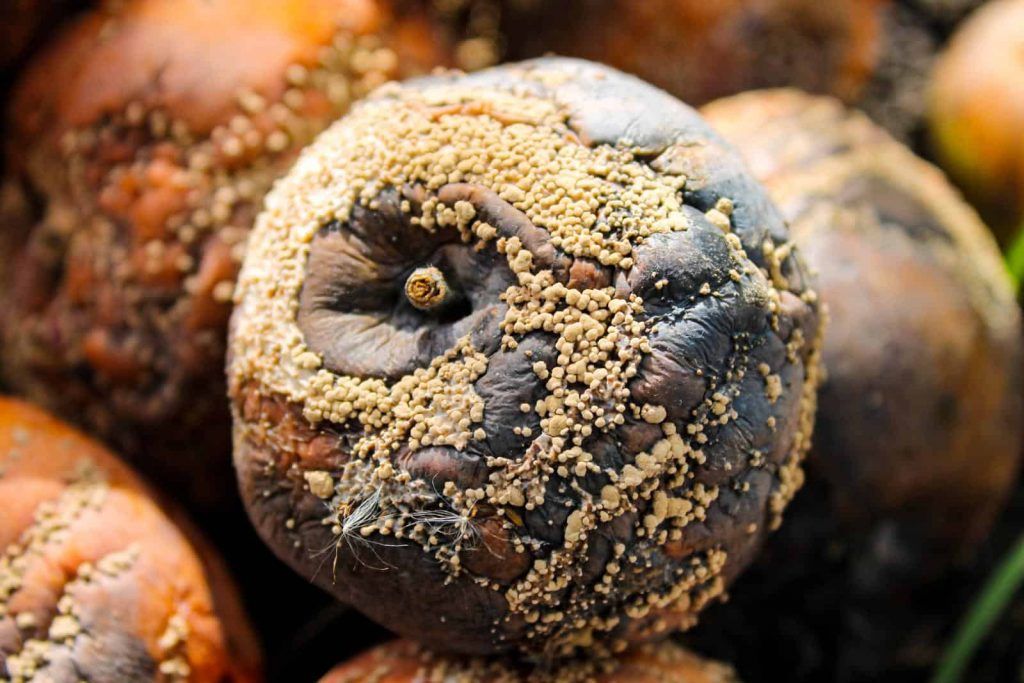
Where to buy cherry seeds or seedlings for cultivation?
As always, if you have the possibility of accessing a nursery near your town, it is the option that we recommend.
This is because you will probably be able to see the plants with your own eyes and also be advised by a professional about their care, planting or transplanting.
In any case, we can also recommend that youpurchase the seeds or plants on Amazon.Here we show you some options:
No products found.
How long does a cherry tree live?
Cherry trees have a life cycle of between 30 and 40 years.
How long does it take for a cherry tree to grow?
The time it takes for a cherry tree to reach adulthood is 6 years.
How long does it take to produce fruit?
The minimum time of life that a cherry tree needs to start its fruit production is 3 years, even 4 in some cases.
Can it be grown in a pot?
Cherry trees accept cultivation in pots without major inconveniences, taking care that the substrate has good drainage and is aerated.
How many times does a cherry tree produce fruit?
Cherry fruit production is reduced, only being active for an average of 45 days each year.
However, it is capable of reaching up to 30 kilos of fruit per tree.
Should a cherry tree be pollinated to obtain fruit?
Cherry trees need pollination for proper fruit production and this process must reach at least 50% of flowers for optimal results.
There are cherry trees that are capable of self-pollinating, but in most cases they need the intervention of pollinating insects.
How cold can a cherry tree tolerate?
Cherry trees do not get along well with frost or extreme cold, so they need to be at a temperature above 7 ° C.
How many cherry trees can be planted per hectare?
In one hectare of land it is possible to plant up to 400 cherry trees that will give an approximate production of 12 thousand kilos of fruit per year.
What kind of fertilizer does a cherry tree need?
The ideal fertilizer for cherry trees is one that has a balanced proportion of nitrogen, potassium and phosphorus.
It is even worth supporting this work with manure for a higher dose of nitrogen that helps in the vigor of the tree.
How much heat and/or drought can a cherry tree tolerate?
Cherry trees are not resistant to drought and a failure in the irrigation process can drastically affect production.
On the subject of heat, they do not do well when temperatures are above 28°C.
We hope you can enjoy this wonderful tree and if you have any questions, you can leave us a comment below

![Photo of Kiwi Irrigation: [Needs, Frequency and Procedure]](https://www.complete-gardening.com/wp-content/uploads/2021/06/Variedades-de-Kiwi-Summer-Kiwi-390x220.jpg)
![Photo of Jasmine Cuttings in Water: [Grafts, Time, Rooting and Planting]](https://www.complete-gardening.com/wp-content/uploads/2022/08/jasmine-cuttings-in-water-grafts-time-rooting-and-planting-390x220.jpg)
![Photo of Alocasias: [Cultivation, Irrigation, Care, Pests and Diseases]](https://www.complete-gardening.com/wp-content/uploads/2022/08/alocasias-cultivation-irrigation-care-pests-and-diseases-390x220.jpg)
